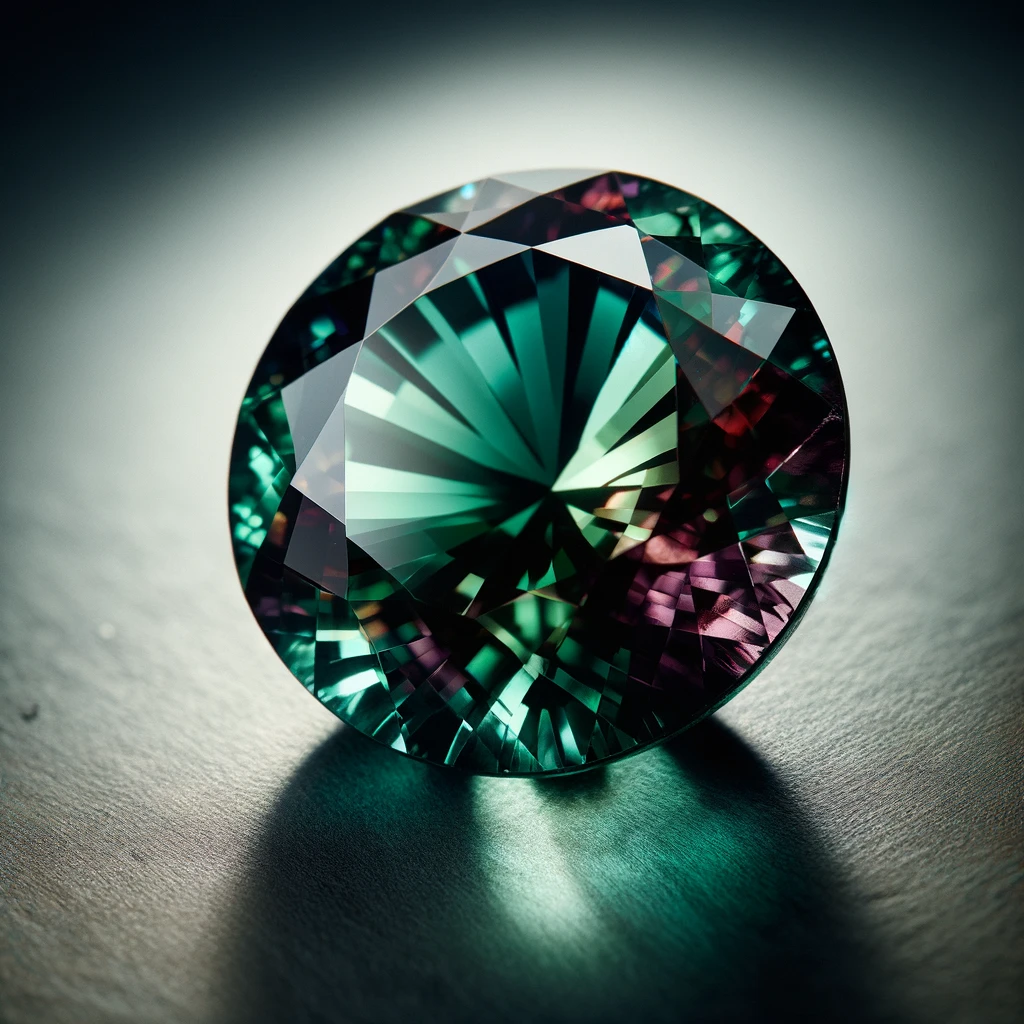Alexandrite
Alexandrite is a rare, color-changing gemstone, highly valued for its unique optical properties.
- Part of speech
- noun
- Definition
- Alexandrite is a rare variety of the mineral chrysoberyl, characterized by its remarkable color change under different lighting conditions, ranging from green in daylight to red in incandescent light. This phenomenon, known as the alexandrite effect, is caused by the complex way the gemstone's mineral structure absorbs light. The ability to change color is due to trace amounts of chromium in the crystal structure of the stone. Its scarcity and distinctive color shift make it one of the most prized and sought-after gemstones in the jewelry industry. Alexandrite is often associated with magic and legend, symbolizing luck, good fortune, and transformation, making it a popular choice for those seeking a gemstone with a deeper, symbolic meaning.
- How it looks
-

Alexandrite is a unique gemstone known for its remarkable color-change effect, exhibiting shades of green in daylight or fluorescent light and red to purplish-red colors in incandescent light. The extent of color change can vary depending on the source of the alexandrite.
Alexandrite is primarily found in Russia, specifically in the Ural Mountains. Other notable sources include Brazil, Sri Lanka, Tanzania, and Madagascar.
Alexandrite has a hardness of 8.5 on the Mohs scale, making it relatively hard and suitable for use in different types of jewelry. Its durability allows it to withstand everyday wear quite well.
Alexandrite is a very rare gemstone that is highly valued for its unique property of changing color under different lighting conditions. Its rarity is due to its specific and scarce geological formation conditions, making it less common than many other gemstones.
To determine if alexandrite is real, examine its color change under different lighting conditions; genuine alexandrite shifts from green in daylight to red under incandescent light. Additionally, consulting a certified gemologist who can analyze the gemstone's physical and optical properties is advisable for a conclusive identification.
Related words
© 2024 All rights reserved.